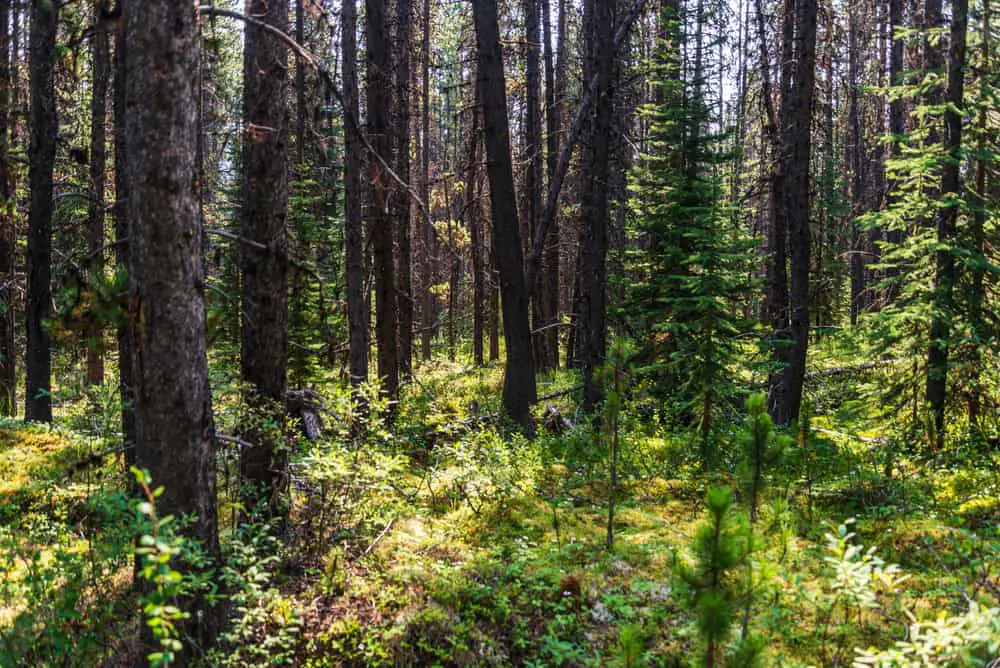
Forests are a spectacular natural creation that is as beautiful as it is dangerous. I adore the city, but camping with friends and family and hiking has its special magic that is irreplaceable!
There is a lot to be admired, so let’s start our trek together and discover what makes these forests such a breath of fresh air.
Alberta has six types of forests; Alberta Mountain Forests, Alberta-British Columbia foothills forests, Aspen Parkland, Mid-Continental Canadian Forests, Muskwa-Slave Lake Forests, and North Central Rockies forests. Each forest boasts a unique tree species and wildlife native to its region.
We can all guess what may lie in a forest, but in each forest is a thriving ecosystem unique to its region! The chance to view such a magnificent spectacle is exciting, especially considering that we rely on them for our survival, too!
Table of Contents
- Types of Forests in Alberta
- What Is The Biggest Forest In Alberta?
- Which Forest Poses The Most Dangers?
- Which Biomes Are Found In Alberta Forests?
- What Floras Exist In Alberta’s Forests?
- What Are Alberta Forests Famous For?
- Which Animals Have Their Home In Alberta’s Forests?
- What Are Alberta Forest Seasons Like?
- Are Forest Disasters Common In Alberta?
- What Threatens The Preservation Of Alberta’s Forests?
- Two Must-See National Parks In Alberta Forests
- What Is The Hardest Hike To Do In Alberta?
- Conclusion
Types of Forests in Alberta
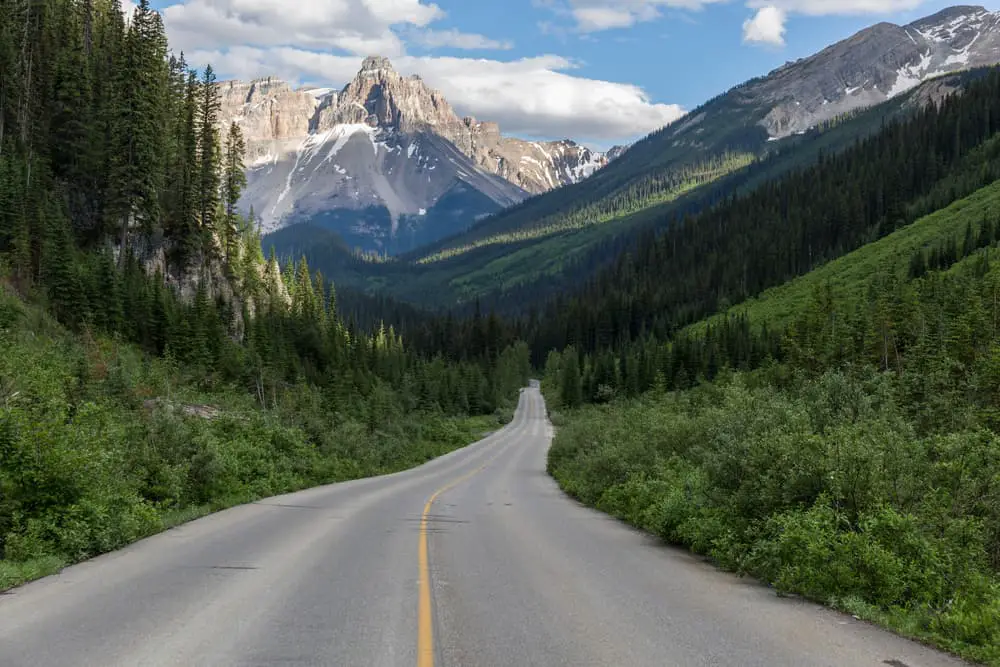
In Western Canada, the Alberta Mountains are an ecoregion of temperate coniferous forests. This ecoregion includes Alberta’s majestic Rocky Mountains, as well as the Continental Ranges’ eastern outliers. It is a glacier-covered location with towering mountains and a forest of tall trees.
The Alberta–British Columbia foothills forests are a temperate coniferous forests ecoregion of Western Canada. It borders Canada’s taiga and contains a mix of subarctic forest and temperate forest species.
Aspen parkland consists of groves of aspen poplars and spruce trees mixed with prairie grasslands and vast stream and river valleys bordered with dense aspen-spruce woods and shrubs. There are several tiny lakes and ponds in this mountainous terrain. It is the world’s largest boreal-grassland transition zone!
Mid-Continental Canadian forests’ ecoregion extends through most of north-eastern Alberta. There are regions of marsh and peat bog, as well as mountain lakes and ponds. This surprisingly diverse environment boasts lowlands and mountains up to 800 meters high, too.
Muskwa–Slave Lake forests consists of vast, flat plains and lowlands that are broke up by mountains and plateaus, similar to the Caribou Mountains. Furthermore, wetlands and bogs encompass about half of the land. The ecoregion has a subarctic climate, and it’s in a zone of discontinuous permafrost.
The North Central Rockies forests are classified as temperate coniferous forests and located in southwestern Alberta. These forests are best known for their wildlands composed of the Rocky Mountains, Lakes, Glaciers. Its variety results from climate differences between the east side which is dry, and the west side, which is wet.
What Is The Biggest Forest In Alberta?
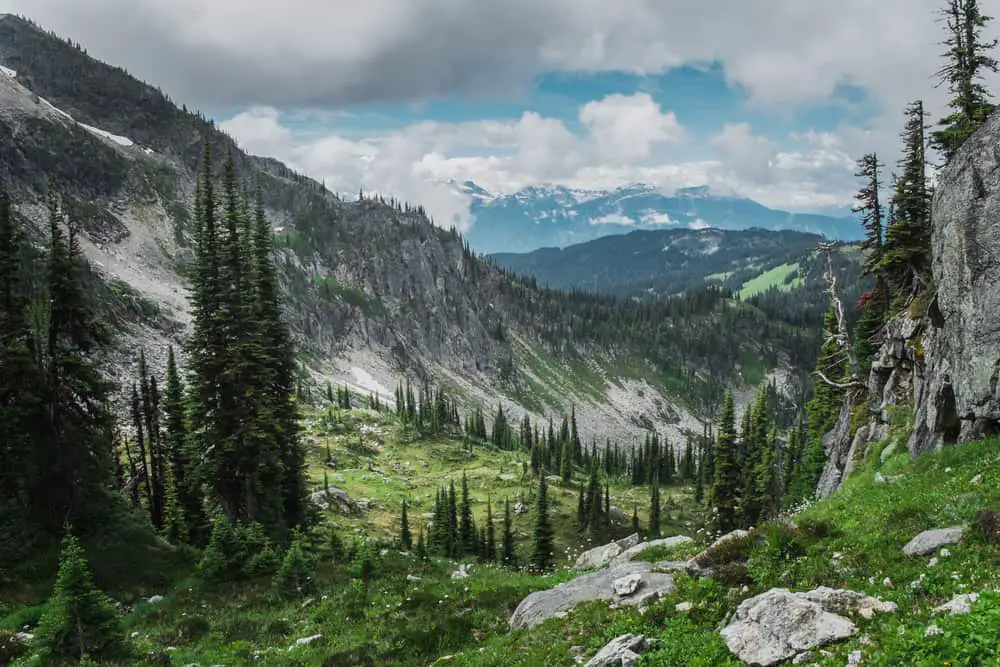
The Boreal Forest is Alberta’s most extensive Natural Region, covering 381,046km2 and accounting for over 58 percent of the province’s geographical area. The Boreal Forest of Alberta stretches from the City of Edmonton to the far northern regions of the province, defining much of the province’s western and eastern borders.
It begins north of the Foothills and Parkland Natural Region. Caribou reindeer and other animals that can move large distances every winter make their homes in boreal woods, which have evolved to survive freezing temperatures all year.
Boreal woods also serve as a significant carbon sink. They absorb carbon dioxide, a significant contributor to global warming and climate change, as do all forests, eliminating it from the atmosphere and contributing to the earth’s overall health.
Which Forest Poses The Most Dangers?
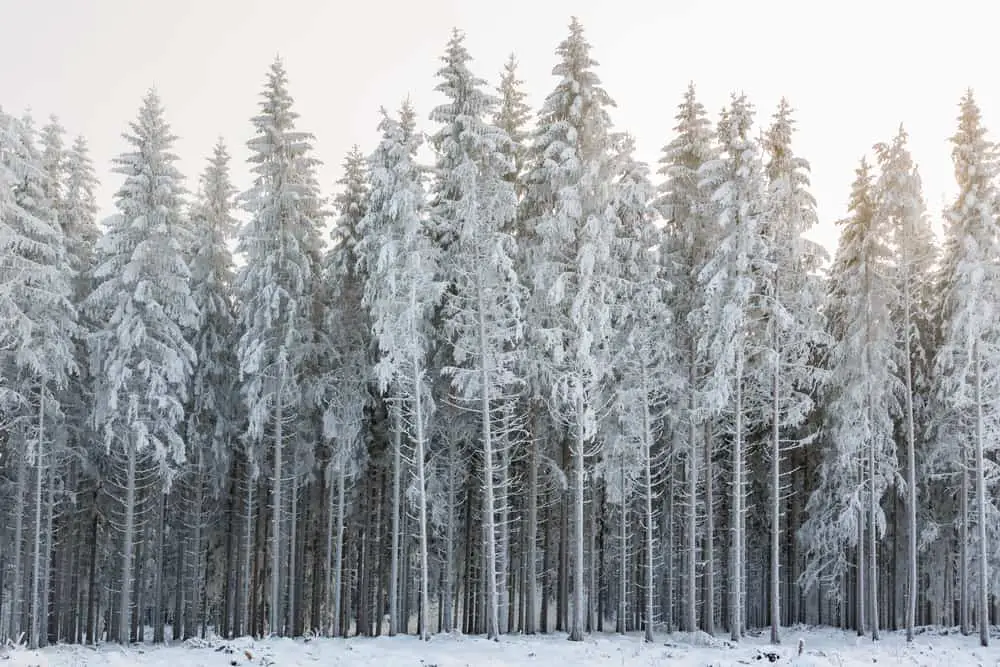
No forest in Alberta is considered habitable by humans. The climates are incredibly harsh, and the animals who call them home think of us, intruders and trespassers. The most significant danger and risk level from these forests are from the animals themselves. The most common of these are from the moose and the prairie rattlesnake.
When moose become angry, they have become aggressive. Motorists are also at risk since they may crash with automobiles when crossing roadways. Moose may also charge if they are spooked. Given a male moose’s weight of around 700 kg, the impact that may occur when hit by a car is enormous and potentially deadly.
The prairie rattlesnake is a very venomous snake that hunts by striking its prey quickly and injecting its lethal venom to kill it. Typically, the prairie rattlesnake does not attack, although it can bite if startled or unintentionally stepped on.
Which Biomes Are Found In Alberta Forests?
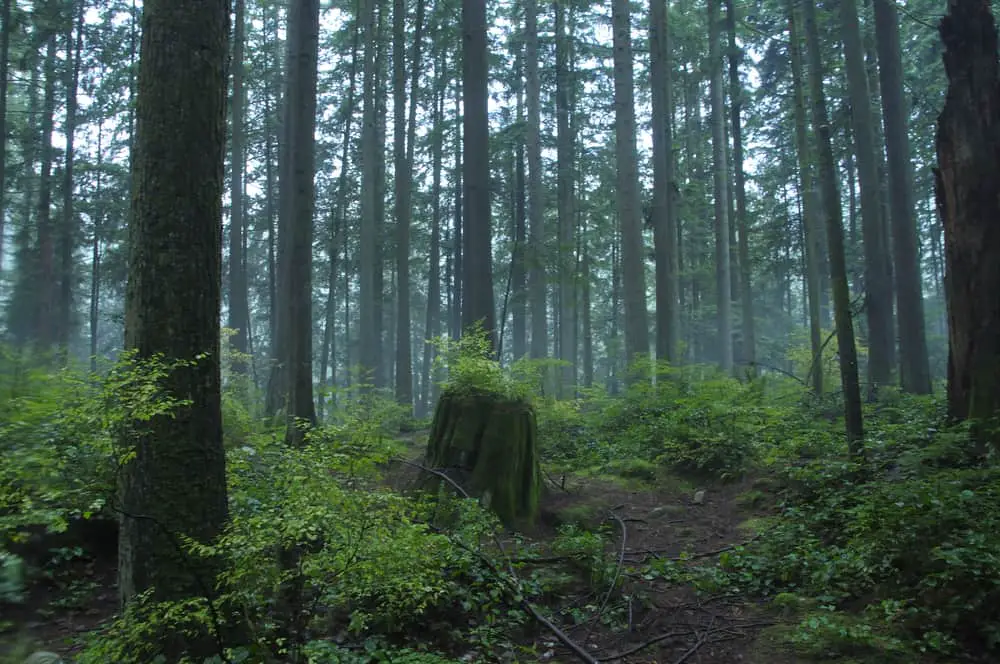
Temperate forests, grassland forests, and boreal forests (also known as the taiga) are Alberta’s three primary forest biomes. Because these forest kinds are at different latitudes, they have varied climatic conditions.
Temperate Forests, which generally grow at higher latitudes, more commonly experience all four seasons. Boreal and grassland forests are situated at even higher latitudes and have the coldest and driest climate, with snowfall being the primary source of precipitation.
Precipitation in the Taiga is between 19.6 and 98.4 inches per annual, while the grassland forests usually get between 14.7 and 27.5 inches and temperate forests between 19.5 to 31.4 inches per annum.
What Floras Exist In Alberta’s Forests?
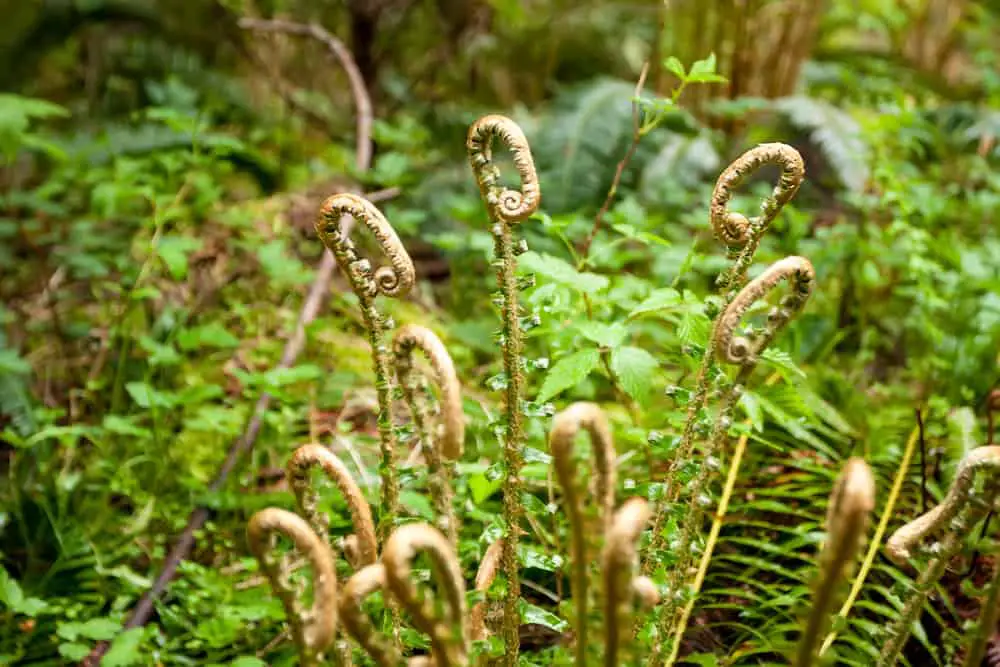
Alberta’s fauna is a treasure trove of greenery that has limitless potential for its citizens. Trembling aspen, Lodgepole Pine, and Engelmann spruce are only some of the floras you can find in the mountain forests. They’re used to produce paper, general building, and musical instruments like guitars, harps, and violins.
Tamarack, Willow, and aspen are native to Aspen Parkland. Tamarack’s pitch, in particular, when mixed with grease, may be used in cosmetics and hair treatments, while the tree’s roots are great to stitch bark onto boats. The bark can be used as a laxative to treat skin conditions and as a tea for sore throats.
In the Rockies, you’ll find large deposits of Western Hemlock, Western Red Cedar, and Subalpine fir. Western Hemlock, in particular, is used for general construction like roof decking. Red Cedar finds its uses for siding, outdoor structures, and more. As for subalpine fir, they are great for veneers, boxes, and pulp.
What Are Alberta Forests Famous For?
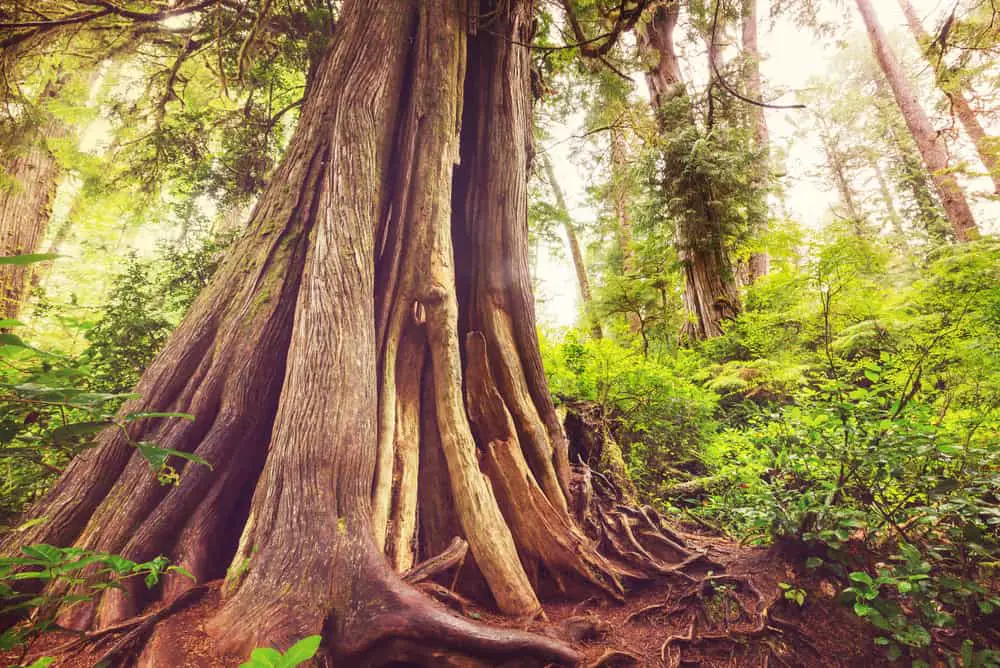
If you haven’t figured it out yet, it’s trees! Alberta’s British-Columbia foothills are well-known for their supply of Douglas-fir, lodgepole pine, ponderosa pine, trembling aspen trees. Railroad ties, mine wood, log houses, furniture and cabinets, and various other local applications have all been made from lodgepole pine.
In addition to its trees, Alberta has a wide variety of fish species that inhabit its waters. These include the Bull trout, Arctic grayling, Goldeye, and Cutthroat trout, amongst others.
If you consider yourself a fishing connoisseur, Alberta’s waters are a fantastic place to throw your sinker! You may want to visit Pinehurst Lake and try your hand at catching a walleye or perch. Other locations like Sibert Lake, Marie Lake, and Peerless Lake boast pike fishing and whitefish.
Which Animals Have Their Home In Alberta’s Forests?
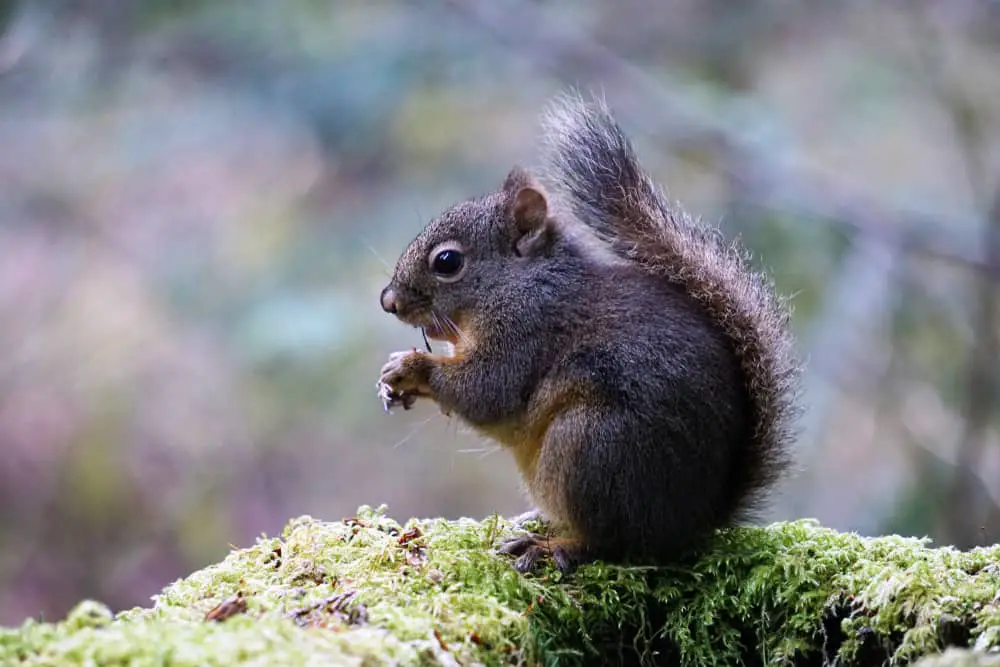
Large and small animals and those that fly can be found in abundance in the mountain forests of Alberta. If you look closely, you’ll find white-tailed deer, the wolf, grizzly bear, lynx, snowshoe hare, Banff Springs snail, and the bald eagle.
As for the Alberta–British Columbia foothills forests, they boast the largest moose population throughout North America. If you’re lucky, your eye may also catch a snowshoe hare, and if you’re unlucky, one of two kinds of species of the black bear. The beaver and muskrat can also be found in these regions.
Around the Mid-Continental Canadian forests in Alberta rests the coyote, eastern cottontail, the sandhill crane, to name a few. Each forest is crucial to the survival of each species, especially those at risk of extinction, namely the wood bison and the woodland caribou.
What Are Alberta Forest Seasons Like?
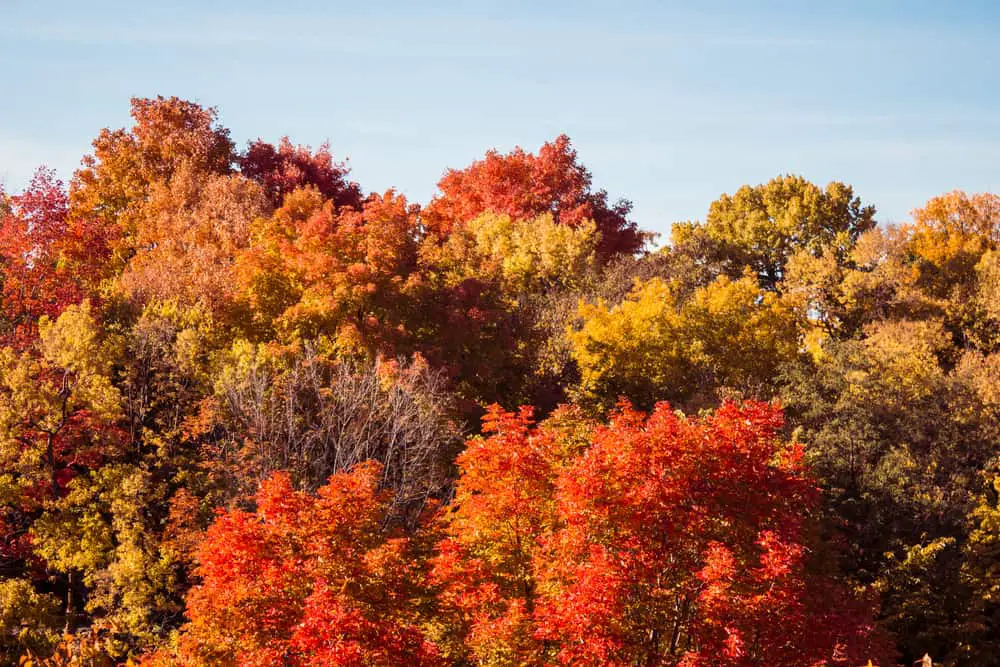
Temperatures may vary substantially during each forest season. On average, summer temperatures range from (53.6 ºF) to (60.8 ºF), so they are a lot more bearable to visit during this time.
Winter temperatures range from (28°ºC) to (5°ºC), making them significantly different and more dangerous. Some of these forests are in a perpetual state of permafrost throughout the year, and visiting so visiting during the winter season is nearly impossible.
Animals are able to survive these climate changes because they hibernate with plenty of food and wait it out, or some animals prefer to migrate and return when the weather is more tolerable. By adapting and changing color, some animals like the snowshoe hare are able to blend into their surroundings and hunt for food more efficiently.
Are Forest Disasters Common In Alberta?
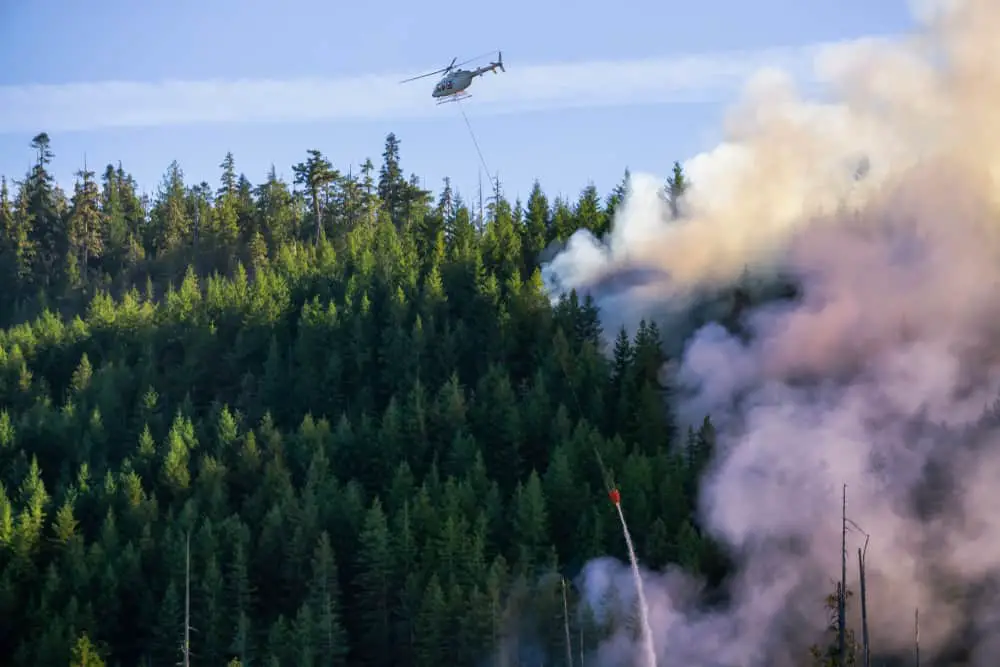
Alberta itself has been a victim of natural disasters such as avalanches, earthquakes, floods, landslides, severe storms, and tornadoes. With a handful of different forests, each with different climates, you start to wonder if they affect the frequency of natural disasters.
Wildfires have happened on more than one occasion and floods, as with the 2003 Kootenay National Park forest fire, 2013 Alberta floods, 2016 Fort McMurray wildfire, and 2019 Alberta wildfires. The 2013 Alberta floods were the worst flood in Canadian history.
As water levels increased and several towns were ordered to evacuate, 32 states of local emergency were proclaimed, and 28 emergency operations centers were created. In 2019, a total of 803,393.32 hectares (1,985,228 acres) of land were burned, which is more than 3.5 times the five-year average.
What Threatens The Preservation Of Alberta’s Forests?
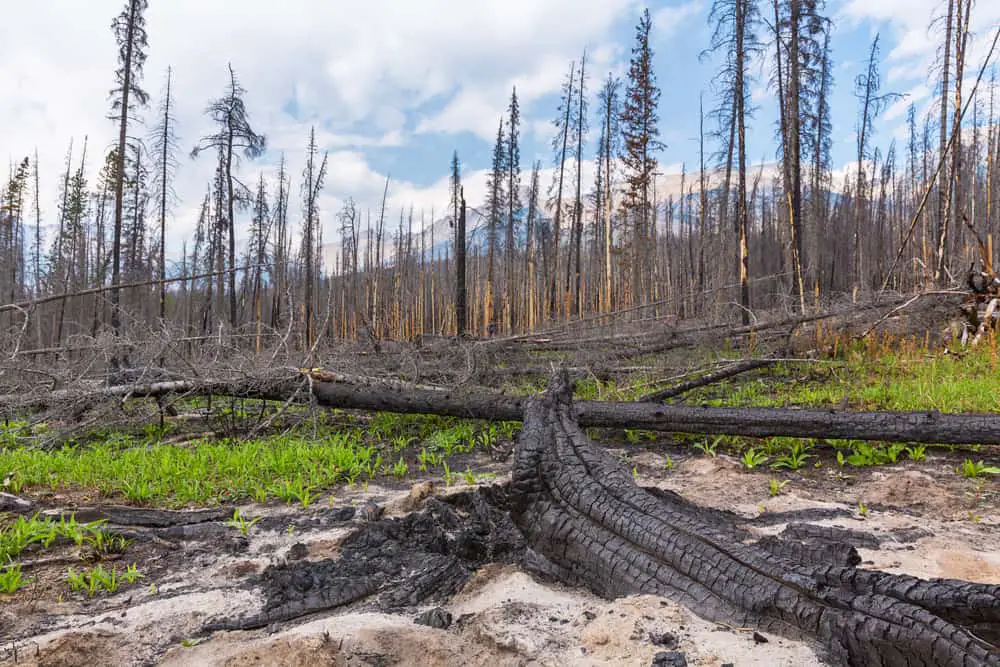
Some of Alberta’s forests have been extensively altered through logging and agriculture, while some still retain most of their ecoregions. The Muskwa-Slave Lake Forests are well preserved and still have an estimated 75% of their resources.
Other regions like Mid-Continental Canadian forests have been reduced by half their capacity by extensive logging, oil, gas, and mining activities. The Rockies’ conservation status is labeled “vulnerable” due to its resources extracted to increase human activity. This includes mining, logging, grazing.
The majority of the aspen parkland, like the prairie biome, has been heavily influenced by agriculture in the 100 years since settlement began in the late 1800s. Although the climate is chillier than the prairies, it is still mild and dry enough to support large-scale crops like canola, alfalfa, wheat, and livestock grazing.
Two Must-See National Parks In Alberta Forests
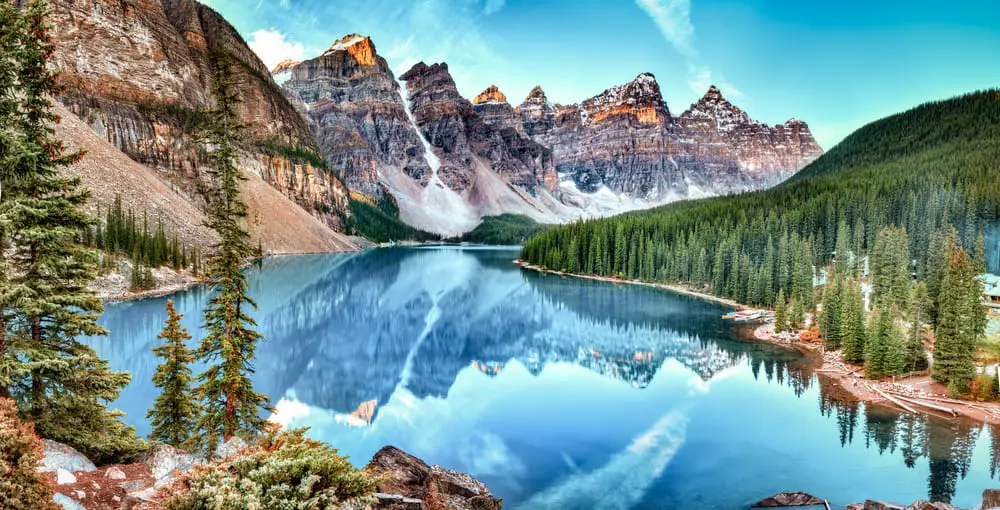
Banff National Park is recognizable by its Rocky Mountains, turquoise glacial lakes, a picture-perfect alpine hamlet and village, rich wildlife, and gorgeous roads! It also happens to be Canada’s very first national park. You can enjoy a lovely hike, go biking, skiing, or go camping in the most spectacular mountain scenery.
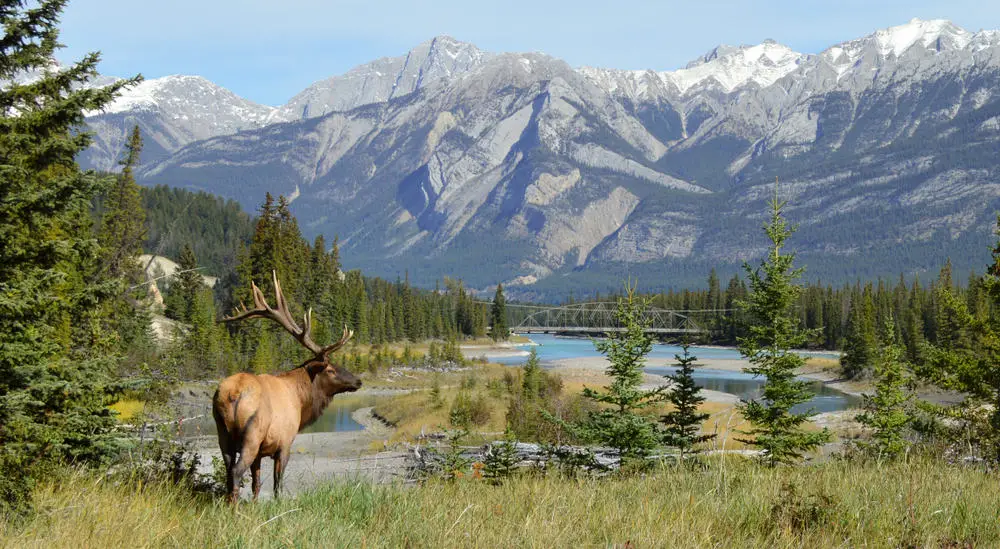
Jasper National Park consists of glaciers, rich animals, crystal-clear lakes, thunderous waterfalls, deep gorges, and evergreen forest, surrounded by towering mountains. It’s no surprise the park was declared a UNESCO World Heritage Site. It’s the ideal location to connect with nature and stare in awe at the vastness of the world!
Mountain day hikes, adrenaline-pumping mountain biking, and excellent paddling are available to visitors. Take one of the numerous beautiful drives, picnic among gorgeous peaks, and enjoy unique animal viewing for a more relaxing pace. It is considered an excellent destination for all members of the family.
What Is The Hardest Hike To Do In Alberta?
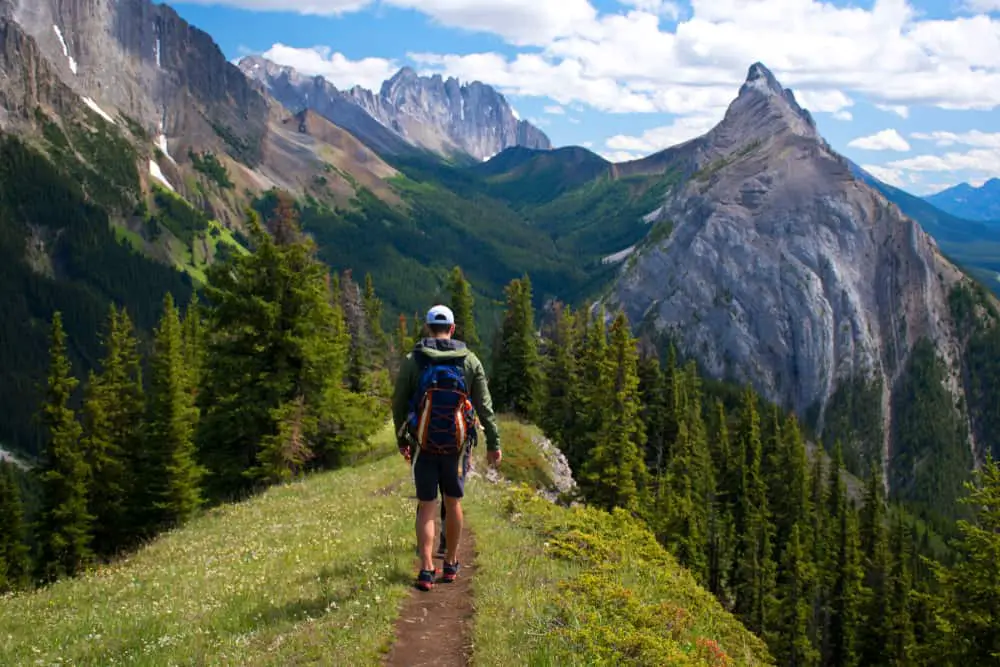
Although challenging hikes are traditionally reserved for rugged mountaineers, some are still accessible to courageous hikers!
The Centennial Ridge trek is categorized as “very difficult,” with an elevation gain of 1,350 meters over a distance of 13.8 kilometers (back). It was built in 1967 to commemorate Canada’s 100th birthday and has the distinction of being the country’s best-kept path.
The Mount Northover Ridge trek, which crosses exposed and steep ridgelines on its way to a height of 3,048 meters, is not for beginners. It’s a three-day walk with amazing views of Northover Lakes, Northover Glacier, Palliser River, Three Isle Lake, and Mount Lyautey over a distance of 23 kilometers.
Conclusion
The types of forests in Alberta have become part of its identity. The people of Alberta have grown accustomed to it is whims and consider them part of the family. They respect one another and co-exist in a complex ecosystem for the sake of survival.
The next time you find yourself camping or hiking, gaze upon the trees, waters, and fauna, breathe it in, and relish in its beauty. Remember to have fun!
Sources:
World Atlas: Types of Forests in Canada
Government of Canada: Forest Classification
Planet Science: What Do Animals Do in Winter
World Wildlife: What’s a Boreal Forest and the Three Types of Forests Around the World
Government of Alberta: Arctic Grayling

